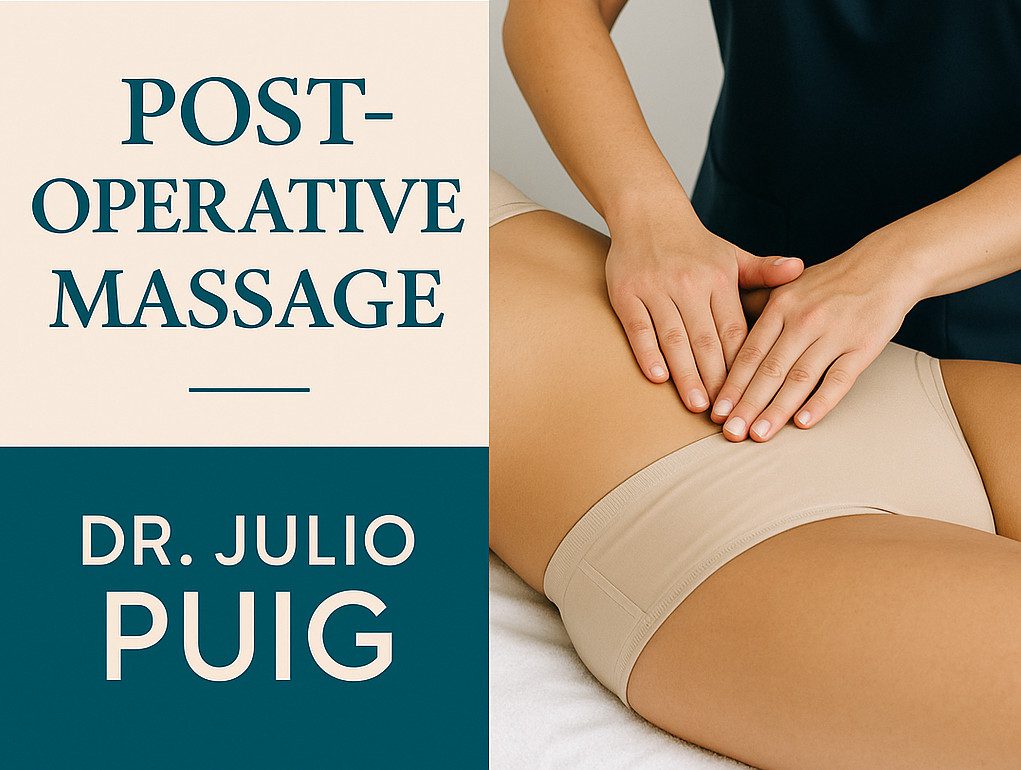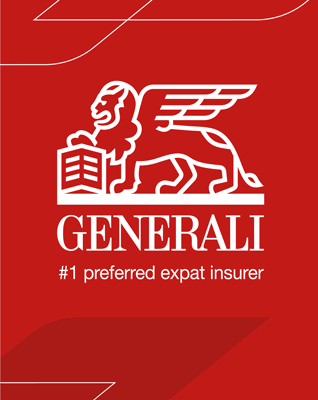-
 play_arrow
play_arrow
BayRadio Listen Live Broadcasting in Spain
Post-operative massages? The definitive guide to ensuring the success of your cosmetic surgery


Are you feeling scared? It’s normal. You’ve just made an important decision and invested in a dream: transforming your body. But now, in the post-operative period, your initial enthusiasm is mixed with concern.
You see swelling, you feel pain, and you ask yourself, “What if the result isn’t what I expected?”
If you have undergone liposuction, a tummy tuck, or breast augmentation, there is one crucial, non-negotiable step that, according to cosmetic surgeon Dr Julio Puig, separates a good result from an extraordinary one. It’s the key to a smooth, even, complication-free final result: post-operative massage.
The risk that threatens your cosmetic investment
After cosmetic surgery, your body naturally reacts with significant inflammation, fluid buildup (edema), and bruising.
This is where the risk lies, and the reason for your concern:
- Fibrosis Formation: If these fluids and inflammation are not properly managed, your body tries to “repair” the area by creating hard, irregular, and unsightly scar tissue. This is called post-liposuction fibrosis or tissue hardening. It is the worst enemy of the figure you so desire.
- Slow Recovery and Pain: Prolonged inflammation not only delays healing, but also increases pain and discomfort, making your recovery a tedious and frustrating process. Your investment of time and money could be compromised if you don’t take the right action.
There is a specialized, clinically proven tool that eliminates this risk and ensures that the final result of your surgery is perfect: post-operative therapy.
What is post-operative massage and why is it essential for your recovery?
Post-operative massage is a specialized therapy that goes far beyond a relaxation massage. It is the necessary complement to ensure the effectiveness of your surgical procedure.
This treatment is the bridge between your surgeon’s work and your final result. It is a combination of gentle and specific techniques, the main one being manual lymphatic drainage (See MLD in drpuig.com), which focuses on your lymphatic system.
The objective is threefold:
- Reduce inflammation and pain: Provides immediate relief by acting on the nervous and circulatory systems, reducing tension.
- Eliminate waste and fluids: Gently moves excess lymph and toxins to the lymph nodes for natural elimination.
- Prevent fibrosis: Fibrosis massage keeps tissues soft and flexible, preventing hardening that affects the aesthetics of the treated area.
In short, post-operative massages are a smart investment to protect and optimize your surgical investment.
Key benefits: how these massages improve your final result
Post-operative care provided by expert hands translates into tangible results that directly impact your appearance and well-being:
- Goodbye to swelling (edema): Massages accelerate the reabsorption of accumulated fluids by up to 70%, causing inflammation to disappear more quickly.
- Smooth, even skin: By mobilizing the tissue from the outset, internal scarring is minimized and the appearance of “lumps” or “knots” (fibrosis) is prevented. This is essential after liposculpture or abdominoplasty.
- Accelerated Healing: Increased blood circulation ensures that nutrients and oxygen reach the operated areas, promoting cell regeneration and healing.
- Recovery of Sensitivity: Helps normalize skin sensitivity in the areas where surgery has been performed, which is often temporarily altered.
- Improved Confidence: Seeing that recovery is faster and the aesthetic results are consolidated, your mood improves significantly.
Lymphatic drainage and anti-fibrosis: the importance of professional experience
For post-operative massage to be effective, it must be performed by a highly qualified therapist. Here is the key to understanding why experience is important:
- Manual Lymphatic Drainage (MLD): This technique requires rhythmic, gentle, and painless movements. If the massage is too strong, it can be counterproductive and even aggravate inflammation. MLD is the basis for mobilizing lymph and toxins.
- Anti-Fibrosis Corrective Therapy: If fibrosis has already begun to form (hardened areas appear), the expert will use complementary techniques such as ultrasound or controlled compression therapy. These treatments are key to breaking down irregular scar tissue and ensuring that the skin remains smooth and elastic.
- Scar Care: In addition to improving the venous environment, massage is also gently applied to the scar itself (once the stitches are removed) to increase its flexibility and make it less visible in the long term.
Safety Warning: A certified therapist knows when to start, where to press, and what to avoid. Incorrect application of therapy can lead to complications in the outcome of your surgery.
Essential Questions About Post-Op Care
Like you, most patients have these questions. Answering them builds confidence and eases anxiety:
When should I start massages?
It’s generally recommended to start very soon, between 2 and 7 days after surgery, as long as your surgeon specifically approves it. Starting early accelerates the elimination of initial fluids.
How many sessions will I need?
It depends on the type of surgery (liposuction, tummy tuck, BBL, etc.) and your individual process. The usual initial cycle is 5 to 15 sessions. The frequency should be high at first (daily or every other day) and then reduced.
Are post-operative massages painful?
No! Professional lymphatic drainage is a gentle manipulation. If you feel intense pain, it is a sign that the technique is not correct. It should be a feeling of relief and well-being.
Do I have to wear the post-surgical girdle?
Yes, without exception. The massage mobilizes fluids, but the girdle (or compression garment) is essential to keep the skin “stuck” to the new body contour and ensure the aesthetic result. Both are a winning team.
Can I do the massage myself?
For the initial stages, it is not recommended. The technique and pressure to stimulate the lymph nodes must be precise. Trusting a professional is the way to safety.
Your recovery starts today!
You have invested in your body and your confidence. Don’t let swelling or fibrosis rob you of the results you deserve. The time to protect your investment is now.
Our team of certified therapists specializes in advanced post-operative techniques (Manual Lymphatic Drainage, corrective ultrasound, and anti-fibrosis therapy) to ensure that your recovery is fast, comfortable, and, above all, perfect.
Book your appointment now and ensure the best results from your surgery.
Contact us today at www.drpuig.com
Spots to start therapy in the first week after surgery fill up quickly. Don’t risk the results of your dream.
Discover the relief and security that comes with knowing you are in expert hands. Start your recovery and show off the body you’ve always wanted.
Written by: Lily
Recent Posts
- Post-operative massages? The definitive guide to ensuring the success of your cosmetic surgery
- Alzheimer’s Disease Could Double in Incidence over the Coming Decades
- A Minimally Invasive Technique Helps Control Resistant Hypertension and Reduce the Use of Medication
- Mohs Surgery Consolidates Its Position as the Most Effective Technique with Minimal Aesthetic Impact for Skin Cancer
- Our Story, Your Health: 25 Years of Medical Innovation at Quirónsalud Torrevieja Hospital

Ctra. Cabo La Nao, CC La Nao, Local 6 03730 Javea, Alicante, Spain
Advertise with us
Do you have a business in Spain? Do you provide a service to the expat community in Spain? Would you like your message to reach over 500.000 people on a weekly basis?
BayRadio is a community orientated radio station offering fantastic content to our many listeners and followers across our various platforms. Contact us now and find out what Bay can do for you!
Our business is helping your business grow.
BAY RADIO S.L. © 2024. ALL RIGHTS RESERVED. WEB DESIGN BY MEDIANIC






Post comments (0)